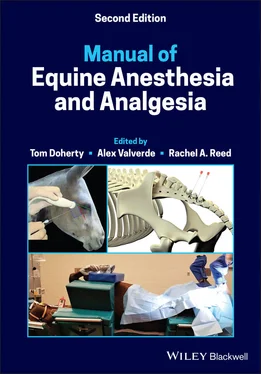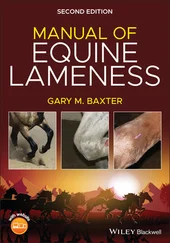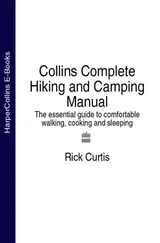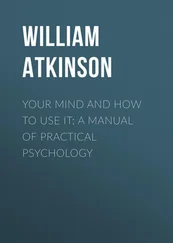A fast induction technique and tracheal intubation allows lung ventilation and rapid control of PaCO2.
Propofol (2–4 mg/kg, IV) or alfaxalone (1–2 mg/kg, IV) can be used for induction of anesthesia in foals, and is fast‐acting.A benzodiazepine can be used with these drugs (co‐induction technique).
Thiopental is a good induction agent for adult horses, but should not be used in foals <8 weeks of age. Thiopental is not presently available in many countries.
Ketamine/benzodiazepine combinations have been shown to increase ICP and not obliterate the catecholamine response to intubation, but the neuroprotective benefits of using ketamine are now recognized. This technique also allows for rapid tracheal intubation.
After prior sedation with a benzodiazepine, gentle nasotracheal intubation or mask‐down inhalational techniques using isoflurane or sevoflurane can be attempted. This technique takes the longest time to perform.Although lung ventilation is possible with nasotracheal intubation, head trauma may preclude the use of nasal tubes.
Low doses of xylazine or detomidine may be used.
The head should be kept in a raised position so that a low head carriage does not increase ICP in horses with intracranial pathology.
Maintenance of anesthesia
Isoflurane or sevoflurane are better choices than halothane. Halothane is not available in many countries.
N2O increases cerebral blood flow and cerebral metabolic rate when combined with a volatile agent, and is probably not advisable to use in horses with intracranial pathology. Its use is limited in equine anesthesia, and is usually reserved for use in foals.
Since volatile agents increase cerebral blood flow through vasodilation, techniques should be employed to limit this.Use PIVA to reduce isoflurane or sevoflurane requirements. IV infusions of α2 agonist and/or lidocaine can be used.Opioids (butorphanol, methadone, morphine, remifentanil) do not reduce isoflurane MAC in horses, but can be used for intra‐operative analgesia.Propofol infusions can be used in horses and can be used alongside isoflurane in a similar manner to their use in dogs and humans to provide anesthesia. A disadvantage is the large volume of propofol required for TIVA or PIVA in adult horses. In adult horses, propofol might reduce PaO2 by an unknown mechanism.Alfaxalone infusion can be used for craniectomy, but recovery in foals may result in excitement behaviors.Respiratory and cardiovascular depression during anesthesia requires lung ventilation and blood pressure support.
Hypothermia should be prevented. Although it can lower cerebral metabolic oxygen demand, it can cause other adverse effects.
Global edema may result from injury or another cause, such as after a successful resuscitation from cardiac arrest.
Drug‐induced decompression
May be achieved through use of:Mannitol (0.15–2.5 g/kg, IV over 20 minutes).Loop diuretics (e.g. furosemide 0.75–1.0 mg/kg, IV).Hypertonic saline (2–4 ml/kg 7.2%, IV over 10–15 minutes).Dimethylsulphoxide (DMSO) (1.0–2.0 g/kg as a 10% or 20% solution).Dexamethasone (0.3–0.6 mg/kg, IV) to reduce ICP is controversial and steroid use for treatment of traumatic brain injury is not recommended in people.Steroids stabilize blood–brain barrier permeability, but the gluconeogenic effects may worsen brain injury.
Further decreases in ICP may be necessary through use of heavy sedation/anesthesia, tracheal intubation and mechanical ventilation with a specialized ventilator. This labor‐intensive procedure might not be possible, and is only feasible for foals.
Glycemic control. Hyperglycemia is associated with increased mortality with head trauma. There is debate whether insulin should be used to control hyperglycemia, but glucose‐containing fluids and gluconeogenic drugs should be avoided.
Anesthetized patients with a high ICP should be ventilated to maintain normocapnia.
Although hyperventilation has been recommended in the past, it is now recommended that normocapnia should be maintained.
In small foals, heavy sedation/anesthesia can be obtained using midazolam and propofol infusions. Dexmedetomidine infusion might also help to reduce drug requirements and stabilize ICP.In any case, normocapnia should be maintained, but this may be difficult to achieve in a sedated foal, and it may be necessary to induce and maintain anesthesia to allow the foal to be intubated and ventilated.Neonatal foals may have reduced ability to metabolize drugs so signs of deepening sedation indicate a need to reduce the amount of drug administered.Care should be directed towards life support during long‐term sedation, including provision of nutrition.
The ability to use intermittent positive‐pressure ventilation (IPPV) to hyperventilate horses and maintain PaCO2 will be considerably affected by the presence of ventilation/perfusion mismatch and the time required to maintain a horse in recumbency. This technique is probably not feasible in adult horses.
Sedatives (e.g. phenobarbital, diazepam) are used to control seizures.
IV phenobarbital can be used for acute seizures, followed by oral therapy.
Diazepam or midazolam (0.1 mg/kg, IV) can be administered for acute seizures because it has a rapid effect. Ataxia may be observed so assistance in standing might be required.
Oxygen and ventilatory support may be necessary if high doses of diazepam are used in neonates.
Propofol can be used to control seizures and can be given as an infusion. It can be used alongside other anti‐seizure medication.
Anesthesia of horses prone to seizures
No study has been published examining these drugs in seizure‐prone horses, but the following points are taken from studies performed in other species.
Xylazine (0.5–1.0 mg/kg, IV) or detomidine (10–15 μg/kg, IV) can be used as a premedicant.Xylazine has been shown in other species to have proconvulsant activity at low doses and anticonvulsant activity at sedative doses.
Acepromazine was once not recommended because other phenothiazines have been shown to reduce the seizure threshold, but acepromazine has been used successfully in seizure‐prone dogs.
Ketamine increases the chance of seizures in patients with a known history of seizure activity, although it has been used to treat seizures refractory to conventional treatment. However, ketamine may be the only choice available for induction of anesthesia in adult horses because thiopental is now not widely available.Since diazepam is an anticonvulsant, the combined use of diazepam/ketamine is safe. Alternatively, propofol/ketamine is safe to use.
Guaifenesin may be used in seizure‐prone horses. Triple drip (α2‐ agonist/guaifenesin and ketamine combination) may be used for short diagnostic procedures with tracheal intubation and lung ventilation.
1 Armitage‐Chan, E.A., Wetmore, L.A., and Chan, D.L. (2007). Anesthetic management of the head trauma patient. J. Vet. Emerg. Crit. Care 17: 5–14.
2 Brosnan, R.J., LeCouteur, R.A., Steffey, E.P. et al. (2002). Direct measurement of intracranial pressure in adult horses. Am. J. Vet. Res. 63: 1252–1256.
3 Brosnan, R.J., Steffey, E.P., LeCouteur, R.A. et al. (2003). Effects of duration of isoflurane anesthesia and mode of ventilation on intracranial and cerebral perfusion pressures in horses. Am. J. Vet. Res. 64: 1444–1448.
4 Brosnan, R.J., Steffey, E.P., LeCouteur, R.A. et al. (2003). Effects of ventilation and isoflurane end‐tidal concentration on intracranial and cerebral perfusion pressures in horses. Am. J. Vet. Res. 64: 21–25.
Читать дальше












